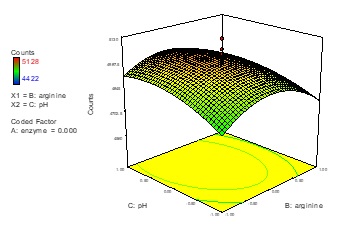JOURNAL 2430
Records of Agricultural and Food Chemistry
Year: 2022 Issue: 1 January-June
p.50 - 58
Viewed 2175 times.
GRAPHICAL ABSTRACT

ABSTRACT
A design of an experiment is generally to fictionalize an execution of an experimental process and the term of experimental design strategy usually refers to a two-stage modeling. The first of all named as working strategy is the determination of the experimental execution model and the last one is that a mathematical model for response surface function to define the relationship between the experimental factors. In this work, it was selected optimization of assay conditions for t-RNA using Central Composite Design, the influence of three factors, namely pH, enzyme concentration and amino acid concentration as an experimental design application, and improved an experiment strategy in order to optimize the effective operation factors on this chemical reaction and mathematical solution techniques of the response surface function. As examining of the coefficients of the response surface equation and its graphics, we can say that the most effective parameter on the esterification process is enzyme concentration alone and together with pH.
KEYWORDS- Experimental design
- statistics
- optimization
- response surface
- t-RNA